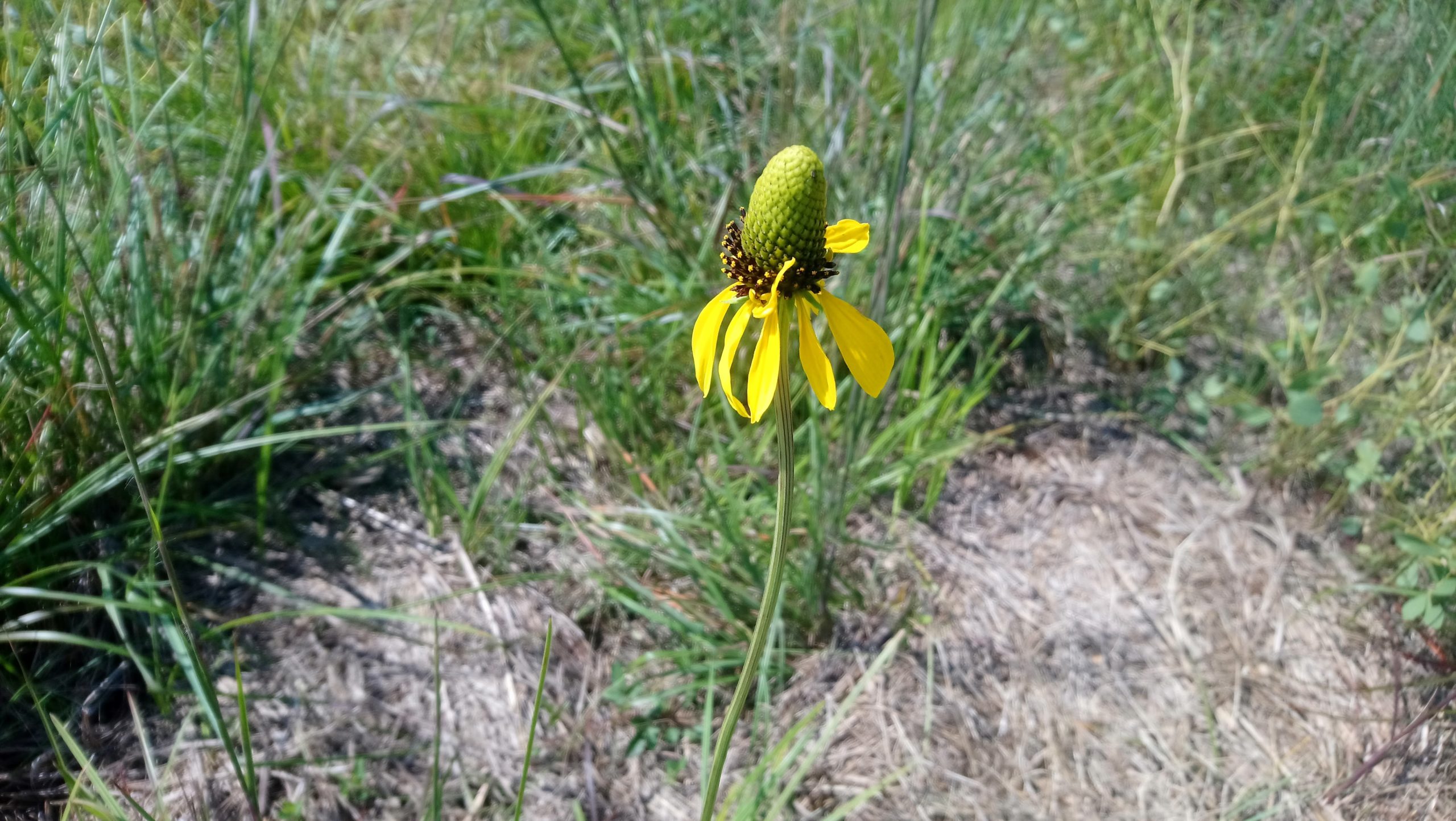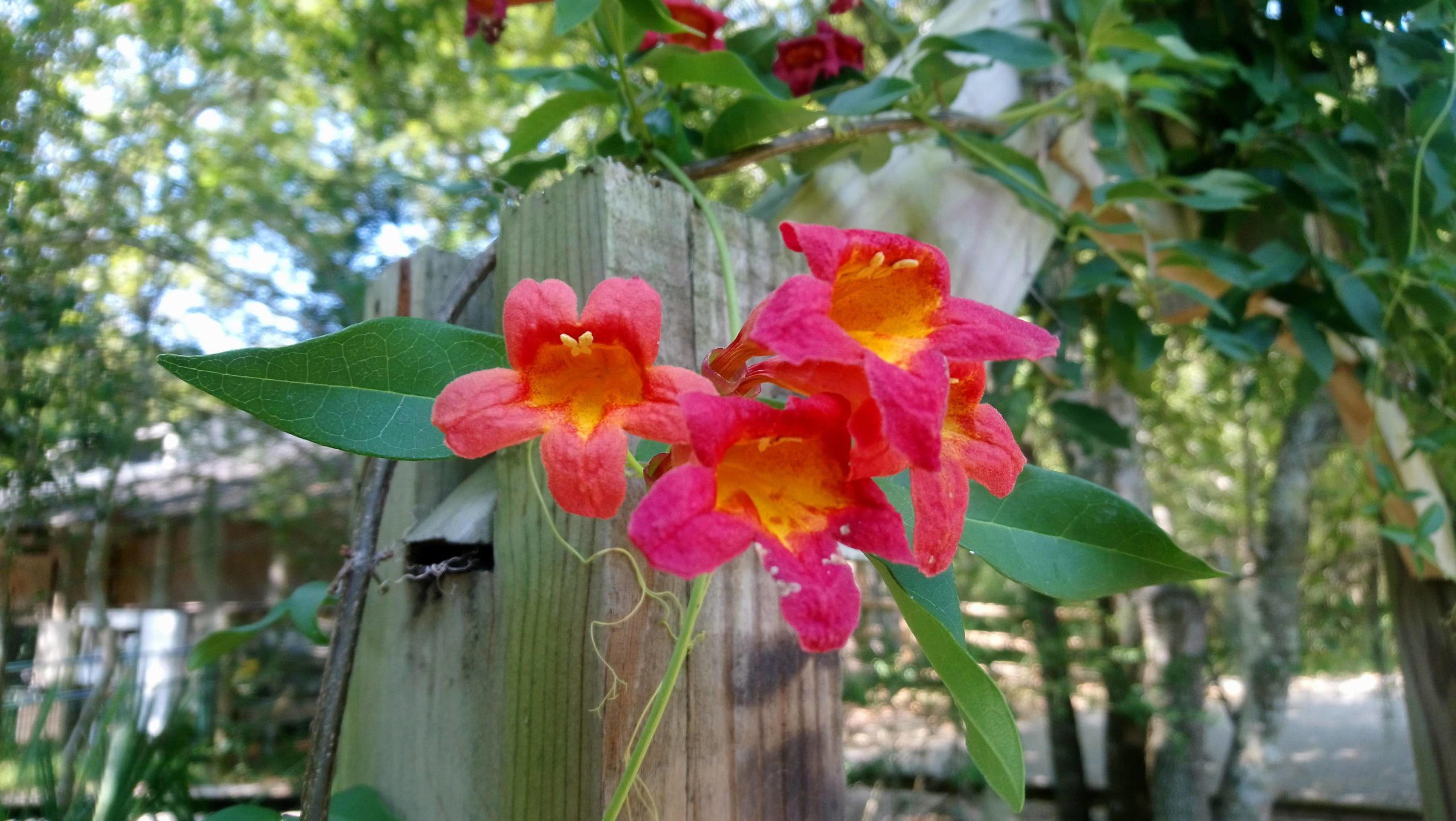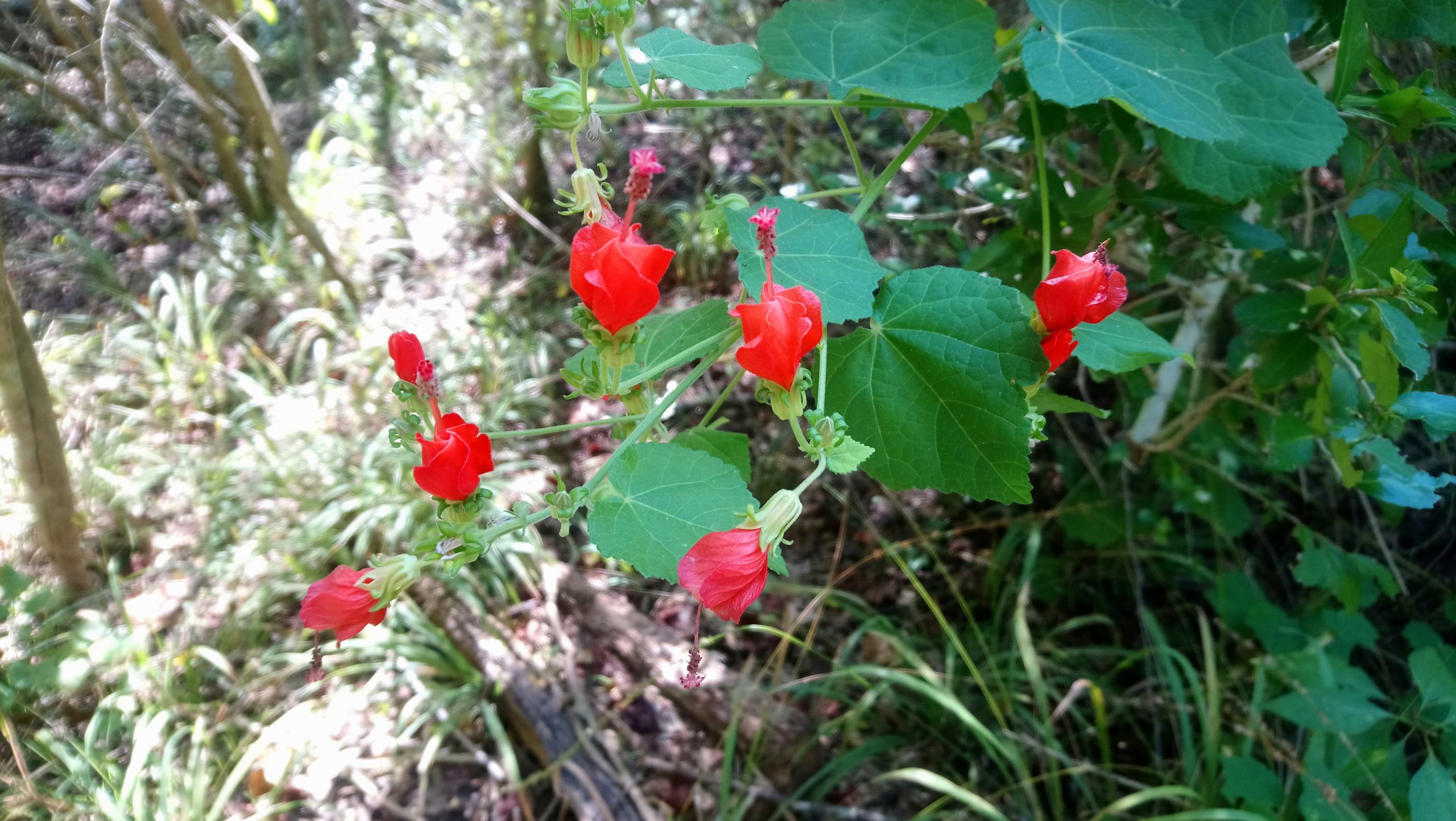Stephen Brueggerhoff, CEA – Horticulture; Texas A&M AgriLife Extension Service 10/12/2020
Exploring local natural areas can be a balm for our senses and well-being and may inspire you to include native plants into your home landscape. Fall is a great time to receive home gardening inspiration from nature, a season I often refer to as a second spring with native plants exhibiting brilliant colors before a short winters rest.
 If you are exploring local natural areas, you may see broad patterns such as pink or yellow hues appearing as a sheen across pastures and coastal prairies. When strolling through a pasture trail, you begin to pick out groups of individual species like Goldenrod (Solidago sp.), bringing a striking brilliance with sun yellow wands that gracefully bow in the wind. The plant’s height is based on the inflorescence reach of each species, and when in flower goldenrod can stand to 4-foot tall. Fall is its season to shine, indicating cooler weather is on the rise. You may notice other yellow-flowering plants such as tall coneflower (Rudbeckia sp.) Reaching to 3-feet, what looks like one single flower are uniform ray petals surrounding a brown, cone- shaped structure that are made of hundreds of individual complete flowers. Both goldenrod and tall coneflower are members of the same plant family (Asteraceae) that sunflowers belong.
If you are exploring local natural areas, you may see broad patterns such as pink or yellow hues appearing as a sheen across pastures and coastal prairies. When strolling through a pasture trail, you begin to pick out groups of individual species like Goldenrod (Solidago sp.), bringing a striking brilliance with sun yellow wands that gracefully bow in the wind. The plant’s height is based on the inflorescence reach of each species, and when in flower goldenrod can stand to 4-foot tall. Fall is its season to shine, indicating cooler weather is on the rise. You may notice other yellow-flowering plants such as tall coneflower (Rudbeckia sp.) Reaching to 3-feet, what looks like one single flower are uniform ray petals surrounding a brown, cone- shaped structure that are made of hundreds of individual complete flowers. Both goldenrod and tall coneflower are members of the same plant family (Asteraceae) that sunflowers belong.
 Benefits for using native plants in the home garden include resource conservation (less water, limited or no fertilization) and resources for wildlife (nectar, pollen). There are quite a number of native plant species and hybrids appropriate to enhance your home landscape and come in all shapes and sizes. I’ll focus on a few vines and shrub-forming plants. For vining plants, you may try Crossvine (Bigononia caperolata), a vigorous evergreen vining plant to 50-feet producing large 2-inch orange trumpet-shaped flowers fading to a golden throat. This vine blooms on new growth in full sun and typically from end of March through May and intermittent through summer, prolific and beautiful as a backdrop tied to a trellis and running along a fence, or gracefully cascading over an arbor. You may also explore Coral honeysuckle (Lonicera sempervirens), delicate thin 2-inch long tube-shaped flowers that appear to bloom through early summer. Both vining plants attract hummingbirds and Crossvine appears to also be a favorite of bees.
Benefits for using native plants in the home garden include resource conservation (less water, limited or no fertilization) and resources for wildlife (nectar, pollen). There are quite a number of native plant species and hybrids appropriate to enhance your home landscape and come in all shapes and sizes. I’ll focus on a few vines and shrub-forming plants. For vining plants, you may try Crossvine (Bigononia caperolata), a vigorous evergreen vining plant to 50-feet producing large 2-inch orange trumpet-shaped flowers fading to a golden throat. This vine blooms on new growth in full sun and typically from end of March through May and intermittent through summer, prolific and beautiful as a backdrop tied to a trellis and running along a fence, or gracefully cascading over an arbor. You may also explore Coral honeysuckle (Lonicera sempervirens), delicate thin 2-inch long tube-shaped flowers that appear to bloom through early summer. Both vining plants attract hummingbirds and Crossvine appears to also be a favorite of bees.
American beautyberry (Callicarpa americana) is a deciduous shrub with graceful arching stems that will tolerate occasional saturated soils. Individual shrubs can reach 5-feet tall and wide, and the payoff are clusters of magenta berries clasping in bunches about 6 to 7 inches apart along outward facing stems in late summer through fall. The shrub can be grown as an understory shrub, and I always make sure to place it in my landscape with dappled shade exposure. For full sun and well-draining and dry soil, you may try Barbados cherry (Malpighia glabra), a native shrub that has the potential to reach 6-feet tall. It offers petite wrinkled leaves and will produce clusters of small flowers across the surface of its canopy. This shrub is semi-evergreen, meaning it has the potential to retain leaves in milder climates. The shrub will tolerate shearing and formal pruning to form a dense hedge for ornament or privacy. I have seen the top of a Barbados cherry hedge shimmer with dozens of tiny pink flowers.
F inally, Turk’s Cap (Malvaviscus arboreus var. drummondii) is a shade tolerant and airy woody sub-shrub of our forested areas, with arching single stems that on average reach 4-foot tall. Unique turban-shaped and brilliant red flowers are produced in spring and again in fall, emerging as a resource for migrating hummingbirds. Texas A&M AgriLife Texas Superstar® promotes Turk’s Cap cultivars ‘Pam Puryear’ with soft pink flowers, and variegated ‘Fiesta’ with yellow and white splotched leaves.
inally, Turk’s Cap (Malvaviscus arboreus var. drummondii) is a shade tolerant and airy woody sub-shrub of our forested areas, with arching single stems that on average reach 4-foot tall. Unique turban-shaped and brilliant red flowers are produced in spring and again in fall, emerging as a resource for migrating hummingbirds. Texas A&M AgriLife Texas Superstar® promotes Turk’s Cap cultivars ‘Pam Puryear’ with soft pink flowers, and variegated ‘Fiesta’ with yellow and white splotched leaves.
We can continue to nurture our connection to our natural world through use of native plants in our gardens. To find out more about commercially available native plants, visit Texas Superstar® online: https://texassuperstar.com, and Aggie Horticulture for best gardening practices: https://aggiehorticulture.tamu.edu Native Plant Society of Texas supports local chapters offering outstanding information and programs related to native Texas plants: https://npsot.org/. I invite you to share your ideas and successes in your garden with me, and I’ll see you in the garden.
